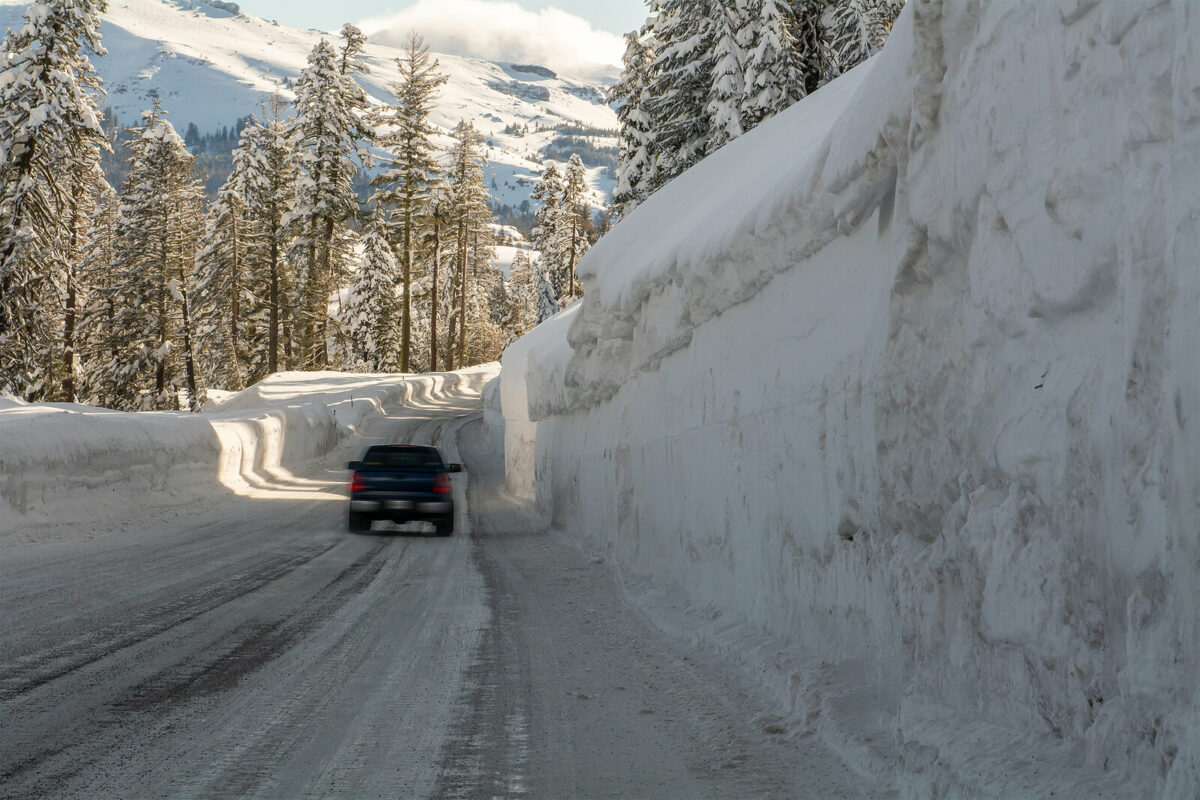Motorists traveling through the snow country of California’s mountains must be prepared for driving in winter weather. Locations such as Ebbetts Pass, Sonora Pass, June Lake Loop, Mammoth Lakes, and others can become hazardous when the snow starts to fall. As ski season and winter in California approaches, it’s helpful to know these driving tips before you travel.
Top Driving Tips for Winter in California
1. Know Where to Check the Weather
Forecasters are now able to predict winter weather conditions days, sometimes more than a week, in advance. You can find precise details on what is predicted for locations across the state. If you’re going to Lake Tahoe, Big Bear Lake, or Mount Shasta, for example, you can check the destination’s website as well for updates. The top weather forecast sites to follow include:
2. Know Where to Check Road Conditions
Caltrans has a tool to search for roads by their number and see the latest road conditions. You can also get updates by calling 800-427-7623 or listening to Caltrans Highway Advisory Radio (Look for road signs while you are traveling; they will tell you the frequency to tune into).
3. Get Your Car Ready
Before setting off into potentially hazardous conditions, check your breaks, exhaust system, heater, defroster, windshield wipers, and antifreeze. Inflate your tires properly and check the treads, and always have chains properly sized for your tires. Your gas tank should be as close to full as possible. Bring along an ice scraper, broom, or commercial deicer in case you need to clean your car off or get snowed in.
4. Install/Bring Tire Chains
Failing to put on chains when highway signs indicate them can result in a fine (the signs are usually placed a mile ahead of checkpoints). Observe posted speed limits, which are usually 25 to 30 miles per hour where chains are required. When chaining your tires, pull off to the right, and make sure you are completely out of any traffic lanes. Don’t take chains off until you are past any “End Chain Control” signs and pull off to a safe area.
5. Take Along the Proper Supplies
In addition to snow-clearing tools, stock your car with water, food, extra clothing, and warm blankets. It’s also a good idea to take an extra key. Locking yourself out of the car in a storm or on a very cold day is not pleasant.
6. Drive Safely
Exercise caution on the way to your destination. When you are taking a winter road trip or encounter bad weather:
- Give yourself enough time, as mountain trips take longer during the winter months.
- Drive slowly; going 65 miles per hour won’t give you enough time to stop in snow and ice.
- Buckle your seat belt to maximize safety and prevent injuries.
- Leave more distance between you and any cars and trucks ahead.
- Do not stop suddenly or change directions too quickly, as your car can slip.
- Observe other vehicles around you, especially when visibility is restricted.
- Make sure the windshield and windows are clear at all times.
- Don’t leave your vehicle if it stalls.
- If trying to stay warm when your car is stuck, be aware of potential carbon monoxide exposure.
- When driving behind snowplows and other snow removal equipment, stay at least four car lengths behind them.
Have You Been in a Winter Car Accident? Call Jacob Today
We hope you follow these driving tips for traveling during winter in California. But if you or a loved one are unfortunate enough to be involved in a winter car accident, The Law Offices of Jacob Emrani can help get the compensation you deserve. Call 888-952-2952 to schedule your free consultation.



